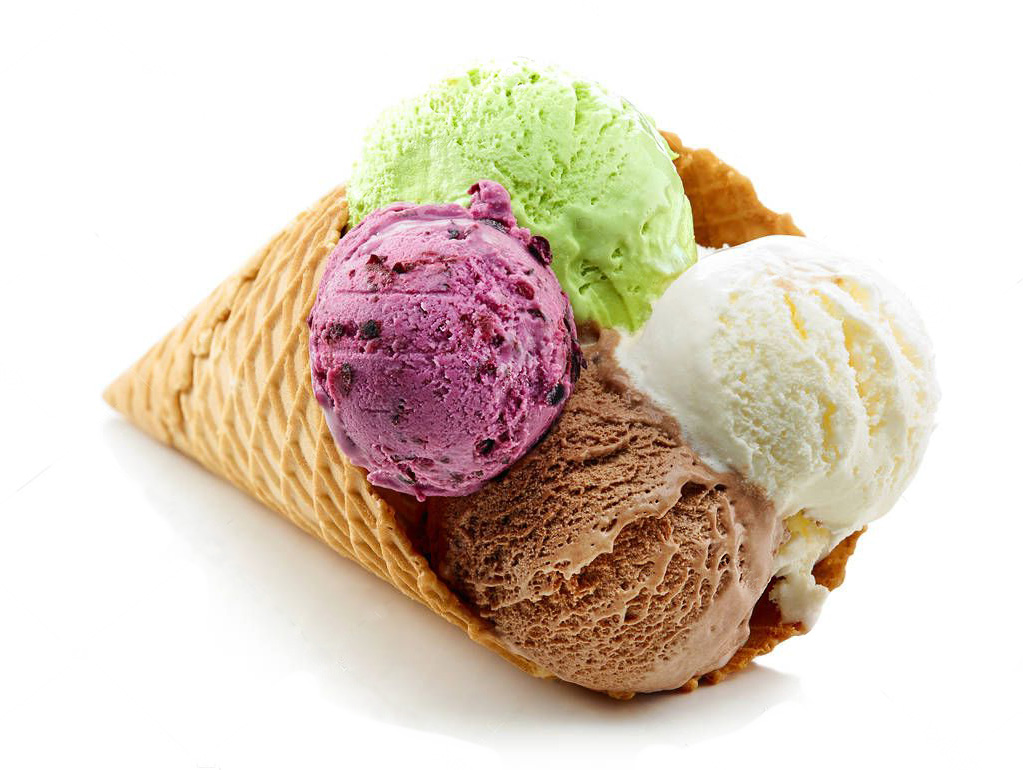Gelato
Gelato is the fresh and homemade Italian style ice cream, made of whole milk and eggs. Pronounced [dʒeˈlaːto]. The word gelato is the past participle of the Italian verb gelare, to freeze. The term is often used in Italy for any frozen dessert, whether milk or water-based. In the most common definition, gelati are made from milk-based mixtures and sorbetti and granite are fruit based. Sorbetto, called sorbet in French, is made from juice or strained fruit puree, whereas cremolata is made with unstrained pureed fruit.

Difference between gelato and ice cream
The differences from a normal industrial ice cream are:
- Gelato contains no preservatives, indeed you can taste the freshness in your mouth.
- Gelato has a lower fat content. Compared to a premium industrial ice cream, gelato contains on average 50 to 60 percent less fat: while a gelato has from 6 to 10 percent fat, an industrial ice cream contains 14 to 24 percent. The lower fat content is good for two reasons: first because it is healthier; second, because the lesser the fat the more you can taste the flavour of this frozen dessert. Less fat means an enhanced flavour.
- Gelato is held at a higher temperature compared to industrial ice cream. This creates the velvety texture that amazes you every time you try it.
Fruit Ice Cream Recipe – Gelato alla frutta
Serves 6
Ingredients:
- 1 candy thermometer
- 2 lbs. fresh fruit as follows:
- 11 oz. peaches
- 11 oz. apricots
- 11 oz. pears
- 3 bananas
- juice of 1 lemon
- 4 C. sugar syrup (Karo syrup) heated to 90°
- 1 C. peach syrup
Directions:
- Wash all fruit well, removing pits from peaches and apricots before slicing; peel and seed the pears before slicing. Peel and slice the bananas. Combine all fruit in the bowl of a food processor and blend on medium for 5 minutes, or as desired.
- Measure the volume of the fruit puree and add the same amount of syrup (if using your own syrup, cool to 90°c. on a candy thermometer). Blend well, and add the lemon juice.
- Add the peach syrup and cool the mixture to 65°/66°. If the temperature exceeds the desired level, add a bit of water, if it is too low, add a bit of the sugar syrup.
- Place the mixture into the ice cream maker and run it until the mass has frozen completely.
History of Gelato
Who invented frozen desserts? The bible tells us that Isaac offered Abraham goat milk mixed with snow. The Chinese recorded eating a refreshing iced mixture as early as 200 B.C. From there, the process of making frozen sweets probably found its way to India and then to Persia
Returning to Europe from an expedition to China in 1295, the Italian trader Marco Polo may have brought back recipes for water ices. By the early 17th century, the Italians were using ice to prepare creamy sweets.
Gelato, meaning “frozen”, was first reported in Renaissance Italy. Bernardo Buontalenti, a native of Florence and cook to the court of Caterina dei Medici, is credited with making frozen concoctions of milk, fruit, and sugar. Francesco Procopio dei Coltelli, born in Sicily, is reported to be the first gelato entrepreneur. After traveling to Paris in 1686, Francesco opened a café there, calling it “Café Procope”. In the café, Francesco served different varieties of gelato, and his cafe quickly became a popular destination point for musicians and writers.
Types
Gelato is categorized in the following way, according to the ingredients used:
